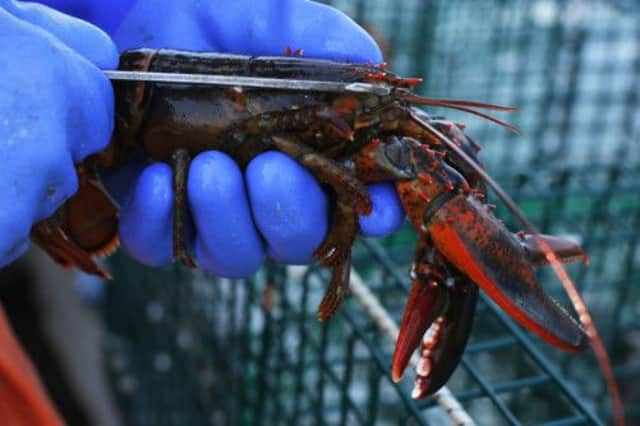Market forces take edge off New England lobster boom


Lobster populations in Maine are booming. Tourists readily pay $15 (£9.60) or more for lobster rolls, and environmentalists have praised the harvest as a rare example of sustainability in a sea of over fishing.
Enter market forces. Last year’s record haul of 126 million pounds, double that of just a decade ago, led some to wonder whether lobster might go the way of cheap, everyday foods like the chicken nugget or TV dinner. Prices paid to lobstermen at the dock plummeted and have not recovered. They are barely enough, said Mr Train, to cover fuel and bait.
Advertisement
Hide AdAdvertisement
Hide Ad“It’s hard to make a business plan the way things are going,” said the 46-year-old lobsterman, who has fished the island- studded waters of Casco Bay since he was a teenager.
Even as many of the world’s fisheries have floundered, the Maine lobster harvest, recently certified as sustainable by the charity the Marine Stewardship Council, has reached epic proportions, but success is relative.
“I’m sure the corn farmer, or the wheat farmer, or chicken farmers all felt the same way at some point,” said Pete Daley, a manager at Garbo Lobster in Hancock, Maine, one of the country’s largest distributors. “People say, ‘I’m not getting the price I used to get, or the price I deserve.’ But what we’re seeing here is an industry that’s evolving.”
No one knows exactly why lobster populations have increased so quickly. The answer, says marine biologist Robert Steneck, is likely to be a combination of rising water temperatures, the over fishing of inshore predators like cod and a long history of forward-thinking conservation measures.
“People are looking at this as a problem,” said Michael Tourkistas, president of East Coast Seafoods, the country’s largest lobster exporter. “But if you’re going to have an issue, excess supply is a good one to have.”
The real problems, many observers contend, are those that have always plagued the industry: a mismatch of ecology and economics and a lack of co-operation among fishermen and dealers renowned for cut-throat competition. In the spring and early summer, lobster come inshore to shed their rigid shells, making them easy prey for near-shore lobstermen in small boats – and easy to eat for tourists who arrive in Maine at about the same time.
The short-term bounty sets up a vicious cycle as the market quickly saturates and the state’s 5,300 lobstermen fish ever harder to make up for low prices, further depressing the price.
And scientists caution Mother Nature is likely to have the last word.
Advertisement
Hide AdAdvertisement
Hide AdIn southern New England, lobster populations spiked in the 1990s with warmer water temperatures, then were overwhelmed by disease and have struggled to recover, said researcher Prof Steneck.
“There isn’t an investor in all the world who would suggest putting all your money in one stock,” he adds. “But that’s what we’re doing here in Maine.”